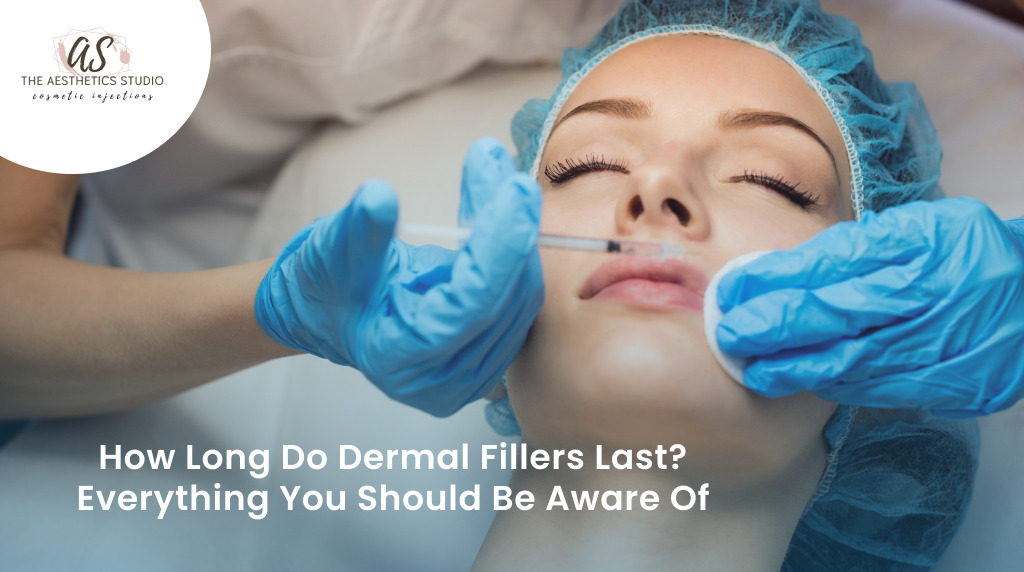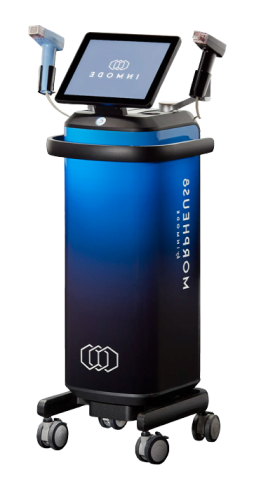If you’re considering dermal fillers, it’s essential to understand their longevity. How long do dermal fillers last? There’s no straightforward answer to that question as it depends on various factors. That said, this comprehensive guide will provide you with all the information you need to determine how long you can expect dermal fillers to last.
Key Takeaways:
- Dermal fillers provide an anti-aging effect that helps reduce the appearance of wrinkles, fine lines, and volume loss.
- The duration of dermal fillers varies depending on several factors, including the type of filler used, the injection area, product composition, and your body’s metabolism.
- The average duration of dermal fillers ranges from six months to two years.
- To extend the lifespan of dermal fillers, proper aftercare, such as avoiding extreme temperatures and sun exposure, and keeping hydrated, is essential.
- Consulting a qualified professional is crucial before deciding on dermal filler treatments.
What Are Dermal Fillers?
Dermal fillers are a type of injectable that provides a non-surgical method of rejuvenating the skin’s appearance. They are made of a gel-like substance that is injected into the skin to fill in wrinkles and lines, adding volume and definition to the treated area.
There are different types of dermal fillers available, and each serves a distinct purpose. For instance, some fillers are used to treat fine lines, while others are best suited for adding volume to the cheeks or lips.
Dermal fillers typically consist of hyaluronic acid, collagen, or calcium hydroxylapatite, natural substances found in the body. This makes them safe and easily absorbed by the skin over time.
Overall, dermal fillers are an excellent option for individuals seeking a non-invasive way to achieve a more youthful look.
Read also: Neurotoxin Treatment Demystified: A Closer Look at the Pros and Cons
How Do Dermal Fillers Work?
Dermal fillers are injectable substances that help smooth out wrinkles, restore lost volume, and sculpt facial features. The specific mechanism behind how dermal fillers work depends on the type of filler used.
Most dermal fillers work by injecting a gel-like substance composed of hyaluronic acid (HA), a substance naturally found in our skin. This gel integrates with the surrounding tissue and provides the necessary volume, helping to lift and smooth wrinkles. As the filler degrades over time, the HA molecules break down and are absorbed by the body, leading to a gradual reduction in the effects of the filler.
Another type of dermal filler is made of collagen, a protein found in the skin. Collagen fillers work by stimulating the body’s natural collagen production, resulting in firmer, more youthful-looking skin. Other dermal fillers use different substances like calcium hydroxylapatite or polymethylmethacrylate (PMMA).
Regardless of the type of filler used, the injected substance helps to create a more youthful, refreshed appearance by restoring volume and smoothing out wrinkles.
Different Types of Dermal Fillers
With the variety of dermal fillers available on the market, it’s essential to know the different types and their unique characteristics.Here are several frequently used ones:
Hyaluronic Acid Fillers
Hyaluronic acid is a naturally occurring sugar in the human body and is responsible for maintaining skin hydration. This fillers use synthetic hyaluronic acid to replenish moisture levels, plump up the skin, and reduce the appearance of fine lines and wrinkles.
Collagen Stimulating Fillers
Collagen stimulating fillers works by stimulating the body’s natural collagen production. As we age, our collagen levels decrease, leading to a loss of skin elasticity and firmness. These fillers use ingredients such as calcium hydroxylapatite and poly-L-lactic acid to trigger collagen production, leading to firmer and smoother-looking skin.
Calcium Hydroxylapatite Fillers
Calcium hydroxylapatite is a mineral-like compound found naturally in the human body, typically in bones. In dermal fillers, it works by stimulating collagen production while also adding volume to the skin. These fillers are often used in areas that require a more significant lift and can last up to a year.
Polymethyl Methacrylate (PMMA) Fillers
PMMA fillers consist of tiny microspheres or beads suspended in a gel-like substance. These fillers provide semi-permanent results by stimulating collagen growth around the microspheres while also filling in wrinkles, scars, and deep lines.
Autologous Wrinkle Fillers
Autologous wrinkle fillers are derived from the patient’s own body. In this procedure, fat is taken from another part of the body, such as the abdomen or thighs, and injected into the face to add volume and reduce wrinkles. While this approach can provide longer-lasting results compared to other fillers, the procedure is more invasive and involves a more prolonged recovery period.
Each of these types of dermal fillers has its advantages and disadvantages. It’s crucial to discuss your specific needs and goals with your provider to determine which type is best for you.
Factors Affecting the Duration of Dermal Fillers
Understanding the duration of dermal fillers is vital before deciding to undergo treatment. Various factors influence the length of time that fillers last in your skin. Here are some of the critical factors that you should be aware of:
| Factor | Description |
|---|---|
| Metabolism | Individual metabolic rates affect how fast the body breaks down the ingredients in dermal fillers. Those with faster metabolisms may require more frequent treatments compared to individuals with slower metabolisms. |
| Injection Area | The location of injections plays a role in the duration of fillers. Areas that frequently move, such as the mouth, may break down the fillers faster compared to regions with less movement, such as cheekbones. |
| Product Composition | Each type of dermal filler has unique properties and compositions, determining its longevity and the effects it has on the body. Some products may last longer than others, based on the molecular structure of the filler. |
By understanding these factors, you can have realistic expectations about the duration of your dermal fillers and how long they will last in your skin.
Average Duration of Different Dermal Fillers
Knowing the average duration of dermal fillers can help you plan your treatments better. Here’s a breakdown of how long some of the most commonly used fillers usually last:
| Dermal Filler Type | Average Duration |
|---|---|
| Juvederm Voluma XC | Up to 2 years |
| Juvederm Ultra XC | Up to 1 year |
| Restylane Silk | 6-12 months |
| Belotero Balance | 6-12 months |
| Radiesse | 12-18 months |
| Sculptra Aesthetic | Up to 2 years |
Note that these durations are approximate and can vary based on various factors. Additionally, factors like the injection area, patient metabolism, and the depth of injection can also impact the life of your treatment. It’s best to consult with a qualified professional to determine the most suitable dermal filler and optimal course of action for your needs.
Maintaining Longevity and Extending the Lifespan of Dermal Fillers
Although dermal fillers have a natural lifespan, you can employ certain practices to extend their longevity. Here are a few tips and tricks to help you make the most of your dermal fillers:
- Limit sun exposure – excessive sun exposure can cause dermal fillers to break down, reducing their lifespan.
- Don’t touch the injection site – keep your hands away from the injection site to prevent any irritation and reduce the risk of infection.
- Stay hydrated – drinking plenty of water can help improve the overall appearance of your skin and add to the longevity of your dermal fillers.
- Invest in skincare – using high-quality skincare products can help maintain the health of your skin and extend the lifespan of your dermal fillers.
- Get touch-up treatments – scheduling regular touch-up treatments can help sustain the effects of your dermal fillers and prolong their lifespan.
By following these suggestions, you can ensure that your dermal fillers last as long as possible, giving you the most bang for your buck.
Read also: 7 tips for a successful neurotoxin treatment session
What to Expect During and After Dermal Filler Treatment
If you’re considering dermal fillers, it’s essential to know what to expect during and after the treatment. Dermal filler treatment typically takes around 30 minutes to an hour, depending on the area being treated and the type of dermal filler used. Before the procedure, your practitioner will assess your medical history and examine the treatment area to determine the best approach.
During treatment, a local anesthetic or numbing cream may be applied, followed by multiple injections of the dermal filler into targeted areas of the skin. You may experience mild discomfort, but this should be temporary and subside shortly after treatment.
After the procedure, you might observe mild redness, swelling, or bruising in the vicinity of the injection sites. Typically, these side effects are temporary and are expected to diminish within a few days.Your practitioner may advise you to avoid strenuous exercise, alcohol consumption, and excessive sun exposure for a few days to help minimize these side effects.
Post-treatment care is essential to ensure the longevity of your dermal filler, including avoiding touching or rubbing the treated area and avoiding extreme cold, heat, or pressure. Your care provider will furnish you with precise post-care guidelines to follow
Overall, dermal filler treatment is safe and effective, providing natural-looking results for a more youthful and refreshed appearance. By understanding what to expect during and after the procedure, you can make an informed decision about whether it’s right for you.
Conclusion
So that’s everything you need to know about the duration of dermal fillers. By now, you should have a comprehensive understanding of how long they last, the factors that impact their longevity, and how to maximize their lifespan. Remember, every individual is unique, and dermal fillers can have varying effects from person to person. It is essential to consult a professional before undergoing treatment and follow all aftercare instructions to ensure the best possible results.
Whether you’re looking to smooth out wrinkles or add volume to your face, dermal fillers can be a fantastic option for achieving your desired results. With proper care and attention, you can enjoy the effects for a significant amount of time and ensure that your investment lasts as long as possible. Don’t hesitate to reach out to The Aesthetics Studio to learn more about how dermal fillers can benefit you!
Thank you for reading about this treatment . Book with us now for your sessions of Dermal fillers treatment and reach out to a med spa clinic or medical spa now!
Frequently Asked Questions:
Q1. How long do dermal fillers typically last?
The duration of dermal fillers can vary depending on several factors such as the type of filler used, the injection area, and individual metabolism. On average, dermal fillers can last anywhere from six months to two years.
Q2. What are dermal fillers?
Dermal fillers are cosmetic injectables that are used to restore volume, enhance facial contours, and reduce the appearance of fine lines and wrinkles. They are typically made from substances like hyaluronic acid or collagen.
Q3. How do dermal fillers work?
Dermal fillers work by adding volume to the skin and plumping areas that have lost collagen or fat. They can also stimulate the production of collagen, which helps improve skin elasticity and firmness.
Q4. What are the different types of dermal fillers?
There are several types of dermal fillers available, including hyaluronic acid fillers, collagen-based fillers, and synthetic fillers. Each type has its own unique characteristics and is suitable for different areas of the face.
Q5. What factors affect the duration of dermal fillers?
The duration of dermal fillers can be influenced by factors such as the individual’s metabolism, the specific injection area, and the composition of the product. Additionally, lifestyle factors like smoking and sun exposure can also affect their longevity.
Q6. What is the average duration of different dermal fillers?
The average duration of dermal fillers can vary depending on the type used. For example, hyaluronic acid fillers typically last between six and 18 months, while collagen-based fillers can last around three to six months.
Q7. How can I maintain the longevity of dermal fillers?
To extend the lifespan of dermal fillers, it is essential to follow proper aftercare instructions provided by your healthcare provider. This may include avoiding excessive sun exposure, practicing a healthy skincare routine, and scheduling regular touch-up appointments.
Q8. What should I expect during and after dermal filler treatment?
During the treatment, a healthcare provider will inject the filler into the targeted area using a fine needle. Some discomfort or temporary swelling may occur afterward, but this typically subsides within a few days. It’s important to follow any specific aftercare instructions provided to ensure optimal results.














